#C.L. Franklin
Photo

Aretha Franklin receives valuable music advice from her father, Reverend C.L. Franklin, in this undated photo.
Photograph by Isaac Sutton, Ebony Collection
#art#vintage photography#photography#aretha franklin#C.L. Franklin#father#isaac sutton#ebony magazine#iconic#icone#music#piano#celeb
30 notes
·
View notes
Text
New Bethel Incident, Detroit 1969
Black Radicalism, Police Repression, Mass Arrests, and an Enduring Mystery
Published June 2021 by Policing and Social Justice HistoryLab/U-M Carceral State Project
Part I: Republic of New Africa
Part II: Outside the Church
Part III: Invading the Church
Part IV: Protests and Trials
Story design by Francesca Ferrara, Caroline Levine, and Matt Lassiter; based on the Detroit Under Fire exhibit section " New Bethel Incident ," researched and written by Aidan Traynor and Matt Lassiter.
On March 29, 1969, a dozen officers from the Detroit Police Department (DPD) invaded the New Bethel Baptist Church and arrested 142 African Americans gathered for the national convention of the Republic of New Africa (RNA). The Black nationalist organization was under constant surveillance by the FBI and the DPD, including multiple undercover agents and informants who had infiltrated the group. The incident began when two white officers initiated a confrontation with armed RNA bodyguards outside the church. What exactly happened is still in dispute, but one officer died in the shootout and his partner claimed that they did not have their guns drawn and were just trying to talk to the Black men. Black power and civil rights activists in Detroit did not believe this cover story and considered the confrontation to be part of the broader policy of politically motivated police repression during the late 1960s. After the 1967 Uprising, the Detroit Police Department criminalized Black Power organizations through illegal surveillance , targeted repression , and mass arrests , including a parallel campaign to destroy the local chapter of the Black Panther Party.
Prisoners inside New Bethel Baptist Church ( source )
A contingent of DPD officers responded to the shooting outside the church by storming inside with extreme force, firing wildly and hitting at least four unarmed and innocent people, taking everyone prisoner and threatening to kill them, and committing many acts of brutality. The DPD's official report claimed that a "hail of gunfire" from inside the church justified the police action, which was a lie to justify the abuses and was contradicted by all of the physical evidence and Black eyewitness testimony. The white police officers arrested all 142 people present--men, women, and children--for "conspiracy to commit murder."
Judge George Crockett, an African American and frequent critic of illegal DPD action, ordered the release of everyone wrongfully detained, which set off a political firestorm. The DPD hierarchy and the Detroit Police Officers Association (DPOA), the reactionary white-dominated union , attacked Judge Crockett in a sustained campaign. Black power and civil rights groups defended the judge and escalated their fight against DPD repression. The murder trials of two RNA bodyguards resulted in acquittals and highlighted additional evidence of unconstitutional police methods. The question of what exactly happened outside the church remains an enduring mystery.
This investigative report reproduces secret FBI and DPD surveillance documents as well as eyewitness accounts of the church invasion, inquiries by civil rights agencies, protests by Black community organizations, and records from the murder trials. Scroll down to explore one of the most controversial and polarizing incidents in the history of Detroit during the civil rights era.
"Can any of you imagine the Detroit Police Department invading an all-white church and rounding up everyone in sight? . . . Can anyone explain in other than racial terms the shooting by police into a closed and surrounded church?"--Recorder's Court Judge George C. Crockett, April 3, 1969
Part I: The Republic of New Africa and Illegal Police Surveillance
The FBI's secret COINTELPRO initiative worked with local police departments to "neutralize" black nationalist groups during the late 1960s and early 1970s ( source )
The Federal Bureau of Investigation launched its COINTELPRO against "Black Nationalist-Hate Groups" on August 25, 1967. The top-secret mission instructed FBI field offices to "disrupt" and "neutralize" Black Power organizations, ostensibly because they advocated violence. In reality, COINTELPRO was an overtly political repression campaign in service of a right-wing law enforcement agenda, part of the FBI's long history of investigating "subversive" civil rights groups and criminalizing political dissent. The FBI shared its "counterintelligence" with local police departments across the country, including the DPD. Even though Black Power groups advocated self-defense against police brutality, the FBI claimed that they were part of a nationwide conspiracy to promote "bitter and diabolic violence" in urban America. The FBI specifically warned that Black radical "urban guerillas" were plotting to ambush police officers through "acts of outrageous terror."
The Detroit Police Department conducted its own secret and unconstitutional political surveillance program, often dubbed the "Red Squad" because of its primary focus on left-wing radicals. The DPD's clandestine Criminal Intelligence Bureau spied on civil rights, Black Power, and New Left organizations--collecting intelligence to help guide illegal police crackdowns designed to repress their political activities. The DPD worked closely with the FBI as well as the Special Investigation Unit of the Michigan State Police, which shared the same mission and engaged in massive civil liberties violations of the rights of citizens during this era. All three of these law enforcement agencies had the Republic of New Africa under surveillance in the build-up to the New Bethel Incident of March 1969, including at least five undercover agents and informants and probably more.
Republic of New Africa
Cover of the RNA's 1968 founding manifesto ( source ). Read the full document here.
The Republic of New Africa (RNA) was a Black nationalist organization that originated in Detroit at the Black Government Conference called by the Malcolm X Society in March 1968. The founding meeting took place at the Shrine of the Black Madonna, a church pastored by Rev. Albert Cleage, one of Detroit's most influential Black Power leaders. About two hundred Black people from all over the United States signed the RNA’s declaration of independence stating, “forever free and independent of the Jurisdiction of the United States.”
The RNA's purpose was to establish a "Black Nation" inside the United States and to gain international recognition as a politically independent entity. The group demanded political control of the "black ghettoes" and of a large territory with a majority-Black population in five southern states. The RNA also called on the United States government pay each Black person $10,000 for reparations. The delegates elected Robert F. Williams, a Black Power leader from North Carolina who was exiled in Cuba, as their president, and Milton Henry, a well-known radical attorney in Michigan, as their vice-president. The RNA included a statement that it would achieve its goals "by arms if necessary."
RNA political agenda and manifesto (stamped "confidential" by the FBI) [ source ]
RNA leaders and members including Brother Gaidi (Milton Henry); Brother Robert, Brother Gaidi, and Brother Imari; Rafael Vierra and Clarence Fuller (who stood trial for murder ( source )
Political Surveillance and Infiltration by FBI COINTELPRO
The FBI placed leaders of the RNA under surveillance even before they formed the organization in March 1968. This memo about the RNA's founding to a top FBI official came from an agent who had infiltrated the movement and was reporting on the initial Detroit gathering. This is clear because the author of the memo is redacted, which the FBI always did for its undercover agents and informants when forced to release internal files under Freedom of Information Act requests. Note also that the RNA's Minister of Defense is redacted, indicating that the person in this key position worked for the FBI.
The COINTELPRO program was secret at the time, and the American public did not learn of its existence until 1971. It was standard practice for the FBI's undercover "agents provocateur" to advocate violence so that the FBI could justify the surveillance and repression of radical organizations. The COINTELPRO mission was to "expose, disrupt, misdirect, discredit, or otherwise neutralize the activities of black nationalist, hate-type organizations and groupings, their leadership, spokesmen, membership, and supporters."
According to this report, provided by an FBI informant, the RNA was planning violence and guerrilla warfare.
It is hard to know for sure if RNA members who were radical Black nationalists actually advocated "warfare" against the United States, or if the FBI informant just claimed that they did to justify the law enforcement operation, or whether the leading advocates of violence inside the RNA were the FBI's "agents provocateur."
Source: View the entire memo here .
The COINTELPRO program rapidly infiltrated RNA chapters around the country, and the FBI's full RNA file (available in the Archives Unbound database) makes clear that the Bureau had more than a dozen and perhaps several dozen informants inside the organization, making up a significant percentage of its active membership.
The FBI sent several undercover informants to the second convention of the RNA, held in Detroit in late March 1969, that culminated in the New Bethel Incident. In the memo below, FBI Director J. Edgar Hoover personally authorizes travel to Detroit by an RNA member from the Los Angeles chapter who is working undercover for the FBI, one of several such memos in the COINTELPRO file.
Hoover's authorization of Los Angeles informant ( source )
The FBI shared this information with the Detroit Police Department and the Michigan State Police, who also had the RNA under surveillance through their own political counterintelligence operations. In addition, based on the COINTELPRO file, it is almost certain that the FBI also had an undercover operative in a position of influence inside the central RNA group in Detroit.
This is particularly important because, as revealed below in secret FBI documents, the Bureau's own undercover agent stated that the Detroit Police Department officers initiated the confrontation outside the New Bethel Baptist Church by firing first, and that no RNA members inside the church fired on the DPD before they stormed inside. But Director J. Edgar Hoover covered up this evidence and reported to the Attorney General and Congress that the RNA radicals had shot at the police first at both stages of the encounter.
The FBI covered up the reports from at least two of its undercover "agents provocateurs" that the Detroit police officers fired at the RNA members outside the church ( source ). The redactions in this document excerpt are FBI agents or informants. View the full document here , taken from FBI files released under FOIA.
Part II: What Happened outside the Church?
"Is it reasonable to believe two white cops would approach 10-12 armed black men, with their pistols in their holsters and no weapons in their hands? . . . Is it conceivable the police behaved illegally? And would they admit it? Have they ever admitted to error in killing black people?"--People Against Racism
Corner of Philadelphia and Linwood where shooting began ( source )
The Republic of New Africa rented the New Bethel Baptist Church for a rally as part of its multi-day Detroit convention in March 1969. The church was pastored by Reverend C. L. Franklin, a prominent civil rights leader in Detroit, and located at the intersection of Philadelphia and Linwood, northwest of downtown. The RNA's rally started at 8 p.m. and ended at 11:25 p.m.
Armed bodyguards were escorting RNA leaders to their cars, and many of the people who attended the rally were still inside, when the gunfire began on the corner of Philadelphia and Linwood.
The Detroit Police Department claimed that two officers were just driving by and saw "approximately 10 to 12 Negro males with guns entering automobiles," so they stopped to investigate. Given that the DPD had the RNA rally under massive surveillance, it is not clear why the patrol officers instigated this encounter, although one theory is that they did not realize what was happening and just stumbled onto the scene.
The two white patrolmen, Michael Czapski and Richard Worobec, approached the RNA group and gunfire ensued. Patrolman Czapski ended up dead with up to seven bullet wounds. Patrolman Worobec was seriously wounded but managed to get into his squad car and drive away before crashing into a storefront.
Patrolmen Richard Worobec ( left ) and Michael Czapski ( right )
The evidence regarding who shot first is contradictory:
Patrolman Worobec testified that a "lone Negro male" shot them both without provocation.
Multiple witnesses said they heard a single shot, then another, then a sustained volley of gunfire. This could support a scenario in which the officers fired first and the RNA bodyguards returned fire.
At least two of the FBI's undercover agents reported that the patrolmen fired first, but the FBI covered this up and so the account never came out. Another FBI informant said that the RNA bodyguards fired first.
An undercover officer with the Michigan State Police claimed to have witnessed the incident and said that the RNA fired first, but he did not testify in the trials, which raises suspicion about the truthfulness of his account.
People Against Racism, an anti-police brutality group in Detroit, asked the DPD story that the white officers approached the large group of armed RNA men with their guns in their holsters and did nothing to provoke the incident, asking: "Is it reasonable to believe two white cops would approach 10-12 armed black men, with their pistols in their holsters and no weapons in their hands?" (Read the full document here ).
Detailed Accounts of the Initial Shootout
The DPD released this police radio log, which was an incomplete summary not a full transcript, raising more questions ( source )
The DPD Version: The police department provided the city of Detroit's civil rights agency with a partial and edited "transcript" of the radio log, based on communications with the dispatcher and the squad car of Patrolman Czapski and Patrolman Worobec, as well as other squad cars that responded (left).
At 11:42 p.m., Scout 10-5 (Czapski and Worobec) radioed in, “We got guys with rifles out here Linwood and Euclid.” The dispatcher sent backup, and a minute later Worobec gave a distress call over the radio and the "two officers shot" report went out.
At 11:48 and 11:49 p.m., the transcript reports that responding officers radioed in that they were taking fire from inside the church. As explained below, there was zero forensic evidence to support this claim, and it was almost certainly a cover story to justify the police action in storming the church.
The clear fabrication of the gunfire from inside the church raises the question of what else the DPD left out of or doctored in this incomplete transcript, which was provided to the Detroit Commission on Community Relations as part of its investigation of police abuses inside the church. It seems particularly unlikely that the two officers would have calmly approached a group of armed Black men at night without having their weapons drawn, as Patrolman Worobec later insisted when he claimed that most of the group scattered before a "lone Negro male" shot them both.
Patrolman Richard Worobec was later part of the notorious STRESS operation that killed at least 22 people , mainly unarmed Black males during undercover decoy operations, between 1971 and 1973. Worobec himself shot and killed two Black teenagers in a September 1971 incident that generated massive community protests. He claimed that the youth had attacked him first, but the evidence strongly indicated that he lied to cover up what really happened, and the city of Detroit paid a $270,000 wrongful death settlement to their families.
Michigan State Police Surveillance: The Michigan State (MSP) version (below) is most interesting because it proves that the law enforcement agency had undercover officers on the scene placing the RNA under surveillance, including one who witnessed the shooting.
This five-page Michigan State Police report on the New Bethel Incident is from the files of Governor William Milliken and is marked "confidential."
It provides a log of the reports to the MSP Operations office. The first entry, 12:03 a.m., notes that an MSP "Intelligence vehicle" was present at the intersection during the shooting.
The second page names the MSP undercover officer as Patrolman Landeros of the DPD, who was tasked to the state police intelligence team.
The report notes that Patrolman Landeros gave a statement to the DPD Homicide Bureau--but he never testified at the RNA trials.
This is suspicious. Did Landeros's statement contradict the account of Richard Worobec, the surviving officer?
The third page of the MSP report relays the Detroit Police Department's false story that Black suspects inside the church were wounded in a shootout, when there is no evidence that anyone except DPD officers fired inside.
The 6:50 a.m. entry corrects previous misinformation and says that "12 to 15 colored subjects" fired on the two DPD officers outside the church.
The fourth page provides an updated account of the DPD's version of what happened outside the church. It is likely that at least one of the armed bodyguards named in this entry was an FBI agent.
The entry also notes the arrest of 140+ people inside the church for "conspiracy to commit murder."
The final page lists five Black "suspects" shot inside the church by DPD officers and frames them as having fired on the police when they did not.
Excerpt from Cincinnati Field Office to FBI Director Hoover ( source ). Read the full three-page document here .
The FBI Informants: At least two of the FBI informants/agents provocateurs told the Cincinnati field office that Patrolmen Worobec and Czapski fired first, and then the RNA bodyguards returned fire.
The document at right is from a heavily redacted report from the FBI's Cincinnati office to Director J. Edgar Hoover. Based on the context, it is clear that at least one and probably two of the undercover informants were sent there by the Cincinnati office and is reporting back. Both say the "police fired first."
The document also makes clear that no one inside the church fired on the police before the DPD rained gunfire into the building.
This document is crucial not only as an eyewitness account insisting that the two white officers provoked the shootout, but also because it proves that FBI Director Hoover lied in his official report about what happened in the New Bethel Incident, found immediately below.
Director J. Edgar Hoover: The FBI Director suppressed all information in the reports he received that contradicted the Detroit Police Department's story that the violent Black radicals in the RNA opened fire unprovoked on the police officers both outside and inside the church. He then sent this memo to Attorney General John Mitchell:
Hoover provided the FBI's official coverup of the New Bethel Incident in this April 4, 1969, memo.
He attributed the account to the FBI's undercover sources, even though he misrepresented what they really said, and to the DPD. Hoover also labeled the RNA a "black extremist" group that instigated the violence both outside and inside the church.
The second page identifies RNA members alleged to have fired on the police officers, based on the undercover FBI informant's account, suppressing the information that the same informant said the police fired first and that no one inside the church shot at the DPD backup.
Hoover also sought to discredit Judge George Crockett, who released the people arrested inside the church and criticized the police abuses, by stating that the Black judge was "in close contact with officials of the Communist Party." The FBI also had a political surveillance file on Crockett, who was a left-wing lawyer before he became a judge.
Hoover concludes that "black extremists" are likely to cause more violence in Detroit.
Black Civilian Witnesses: Multiple witnesses gave statements in the murder trials or to the civil rights investigation by the Detroit Commission on Community Relations. None of them had seen what happened to instigate the encounter, meaning that they did not know whether the two white officers fired first or not. All of them stated that they saw only one Black man (only one of the RNA bodyguards) fire at the officers. This also fits Patrolman Worobec's testimony, and it means that the law enforcement accounts that a large group of RNA bodyguards opened fire were not true. Additionally, the witnesses report that the DPD backup officers were on the scene immediately when the gunfire erupted, which indicates a broader tactical surveillance operation rather than the police department's official story that the squad cars only responded when Patrolman Worobec radioed the dispatcher for help.
Kelly Zanders
Kelly Zanders, a 20-year-old Black female from Cleveland, was leaving the RNA rally and gave her statement to the defense attorneys. She said she did not see the beginning but did see a Black man with a rifle firing at another man on the sidewalk. She also said that Clarence (Chaka) Fuller, who was charged with murder, was with her the whole time and never fired a gun.
Wilbur Gratton
Wilbur Gratton, a 50-year-old Black man and RNA member from Cleveland, said in his affidavit that he saw a man shooting a rifle at another man "lying prone on the sidewalk." He also swore that Chaka Fuller was not the shooter.
Gerald McKinney
Gerald McKinney, a Black man, was driving by and not involved with the RNA. He said he saw a man with a "rifle and he was firing into the back of the police car." McKinney also said that the other DPD officers were already on the scene during the initial shootout.
William Barry, Jr.
William Barry, Jr., a Black man, was riding in the car with Gerald McKinney and said he saw a man on the sidewalk shooting toward the police car. Barry also stated that 15-20 police officers arrived "within seconds," which again raises questions about the veracity of the police log provided by the DPD.
Max Hardeman
Max Hardeman, a Black man, was interviewed for the investigation by the Detroit Commission on Community Relations. He was across the street and said he saw an RNA bodyguard "fire several blasts" at a police officer. Like every other civilian witness, Hardeman saw only one shooter.
The DCCR report concluded that what happened outside the church "has proved impossible to recreate" but was harshly critical of the DPD's actions inside the church, examined next.
Part III: The DPD's Invasion of the Church
"Were basic constitutional rights flouted by acts of reprisal generated from uncontrolled anger over the slaying of a fellow officer?" -- Detroit Commission on Community Relations, investigative report of New Bethel Incident
All of the civilian witnesses agreed that the solitary man who shot at the white police officers did not flee into the church, as the DPD claimed the shooters did in its official report. Whether the two officers fired first or not in the encounter outside the church is still uncertain to this day. What happened next is not. The contingent of DPD officers on the scene fabricated a story that multiple RNA shooters fled into the church, and that "black extremist" radicals inside the church fired at the officers outside, to justify the armed invasion and brutal retaliation that followed. All non-police testimony and all forensic evidence reveals that no one inside the church fired a shot and that every bullet came from a police weapon.
RNA members held prisoner and "herded up like cattle" after the police invasion; photograph from a legal defense pamphlet by the radical League of Revolutionary Black Workers ( source ).
There were 142 African Americans, including many women and children, still inside the New Bethel Baptist Church after the RNA rally when the police assault began around five minutes after the sidewalk shooting. The police contingent of at least a dozen officers fired around 100 rounds into the church before and during the invasion. The Black civilians took refuge and later described a campaign of racial terror and indiscriminate vengeance by the invading officers, even as they tried to surrender and after they were prisoners. The police officers who invaded the church arrested them all and booked everyone present for conspiracy to commit murder.
Source : View the full DCCR investigation report here .
CLICK THE HEADER TO READ THE ENTIRE PIECE, AS IT'S ABOVE THE LIMIT FOR TUMBLR POSTS
CLICK HERE TO READ AND SEE ALL THE PICTURES
#Detroit#RNA#Republic of New Afrika#New Bethel Baptist Church#New Bethel Incident#Detroit 1969#Rev C.L. Franklin#Chaka Fuller#dpd#white supremacy#cointelpro#March 29#1969#march 29 1969#msp#hoover#white lies
3 notes
·
View notes
Photo

67 notes
·
View notes
Text
Aretha Franklin, the brilliant soul singer, came from a pious home.
Her father was Reverend C.L. Franklin, a nationally known Baptist preacher and civil rights activist who, in spite of his religious commitments, impregnated a 12 year old girl at his church. He was renowned as a 'promiscuous' gospel preacher, who hosted orgies at his church, that Ray Charles once dubbed a 'sex circus.'
When Aretha fell pregnant at the age of just 12, such was her father's reputation, that rumors began circulating that he was the baby's dad. But Aretha has never publicly shared who her baby's father was.
After having her child, her father let her drop out of school. But instead of letting her stay home to take care of the children - that responsibility fell to her paternal grandmother- C.L. recruited his daughter to begin traveling with him and his gospel group on the road.
According to biographer David Ritz, Aretha told him that when she was 12, she went back to then 23-year-old Sam Cooke's motel room with him.
When Aretha was 14, she became pregnant again. Already a mum-of-two by 15, she set her sights firmly on a career in music, falling into the arms of a renowned Detroit pimp who she later married.
0 notes
Text

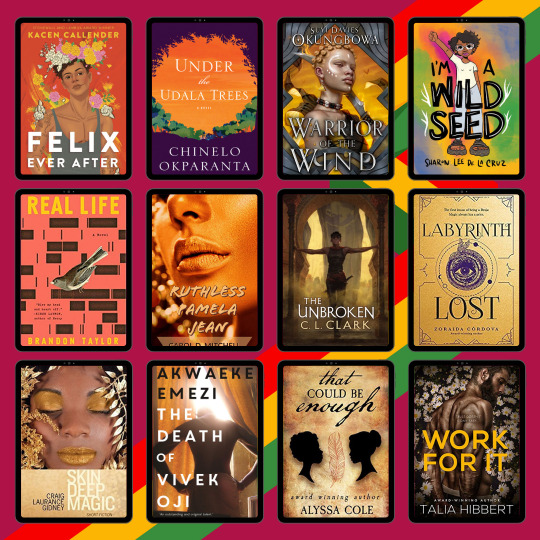
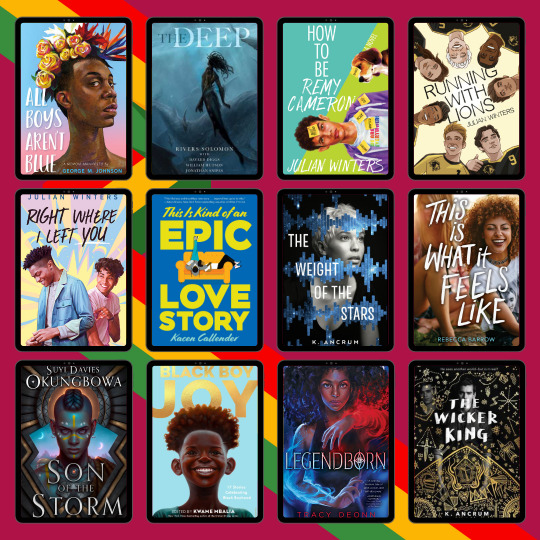
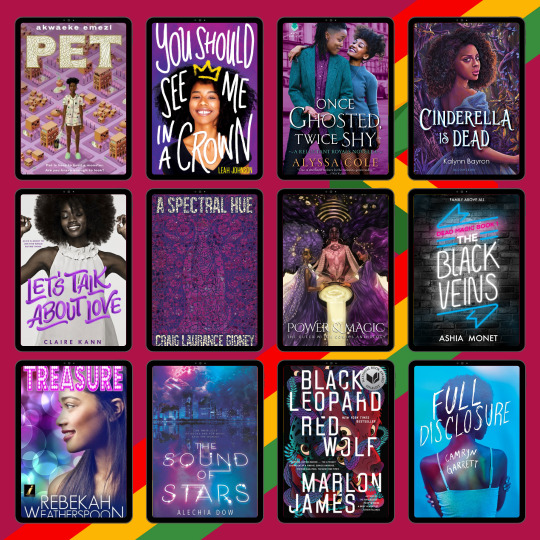






🖤 Black History Month ❤️
💛 Queer Books by Black Authors 💚
[ List Under the Cut ]
🖤 Felix Ever After by Kacen Callender
❤️ Under the Udala Trees by Chinelo Okparanta
💛 Warrior of the Wind by Suyi Davies Okungbowa
💚 I'm a Wild Seed by Sharon Lee De La Cruz
🖤 Real Life by Brandon Taylor
❤️ Ruthless Pamela Jean by Carol Denise Mitchell
💛 The Unbroken by C.L. Clark
💚 Labyrinth Lost by Zoraida Córdova
🖤 Skin Deep Magic by Craig Laurance Gidney
❤️ The Death of Vivek Oji by Akwaeke Emezi
💛 That Could Be Enough by Alyssa Cole
💚Work for It by Talia Hibbert
🖤 All Boys Aren't Blue by George M. Johnson
❤️ The Deep by Rivers Solomon
💛 How to Be Remy Cameron by Julian Winters
💚 Running With Lions by Julian Winters
🖤 Right Where I Left You by Julian Winters
❤️ This Is Kind of an Epic Love Story by Kacen Callender
💛 The Weight of the Stars by K. Ancrum
💚 This Is What It Feels Like by Rebecca Barrow
🖤 Son of the Storm by Suyi Davies Okungbowa
❤️ Black Boy Joy by Kwame Mbalia
💛 Legendborn by Tracy Deonn
💚 The Wicker King by K. Ancrum
🖤 Pet by Akwaeke Emezi
❤️ You Should See Me in a Crown by Leah Johnson
💛 Once Ghosted, Twice Shy by Alyssa Cole
💚 Cinderella Is Dead by Kalynn Bayron
🖤 Let's Talk About Love by Claire Kann
❤️ A Spectral Hue by Craig Laurance Gidney
💛 Power & Magic by Joamette Gil
💚 The Black Veins by Ashia Monet
🖤 Treasure by Rebekah Weatherspoon
❤️ The Sound of Stars by Alechia Dow
💛 Black Leopard, Red Wolf by Marlon James
💚 Full Disclosure by Camryn Garrett
🖤 The Black Flamingo by Dean Atta
❤️ Meet Cute Diary by Emery Lee
💛 A Phoenix First Must Burn (edited) by Patrice Caldwell
💚 Rise to the Sun by Leah Johnson
🖤 Things We Couldn't Say by Jay Coles
❤️ Black Boy Out of Time by Hari Ziyad
💛 Darling by K. Ancrum
💚 The Secrets of Eden by Brandon Goode
🖤 Ace of Spades by Faridah Àbíké-Íyímídé
❤️ Off the Record by Camryn Garrett
💛 Honey Girl by Morgan Rogers
💚 Ace of Spades by Faridah Àbíké-Íyímídé
🖤 How to Dispatch a Human by Stephanie Andrea Allen
❤️ Black Girl, Call Home by Jasmine Mans
💛 The Essential June Jordan (edited) by Jan Heller Levi and Christoph Keller
💚 A Master of Djinn by P. Djèl�� Clark
🖤 A Blade So Black by L.L. McKinney
❤️ Clap When You Land by Elizabeth Acevedo
💛 Dread Nation by Justina Ireland
💚 Punch Me Up to the Gods by Brian Broome
🖤 Masquerade by Anne Shade
❤️ One of the Good Ones by Maika Moulite & Maritza Moulite
💛 Soulstar by C.L. Polk
💚 100 Boyfriends by Brontez Purnell
🖤 Hurricane Child by Kacen Callender
❤️ Quietly Hostile by Samantha Irby
💛 Coffee Will Make You Black by April Sinclair
💚 The Death of Vivek Oji by Akwaeke Emezi
🖤 If It Makes You Happy by Claire Kann
❤️ Sweethand by N.G. Peltier
💛 This Poison Heart by Kalynn Bayron
💚 Better Off Red by Rebekah Weatherspoon
🖤 Friday I’m in Love by Camryn Garrett
❤️ Rainbow Milk by Paul Mendez
💛 Memorial by Bryan Washington
💚 Patsy by Nicole Y. Dennis-Benn
🖤 Sorrowland by Rivers Solomon
❤️ How to Find a Princess by Alyssa Cole
💛 Yesterday is History by Kosoko Jackosn
💚 Mouths of Rain (edited) by Briona Simone Jones
🖤 Dead Dead Girls by Nekesa Afia
❤️ Love's Divine by Ava Freeman
💛 The Prophets by Robert Jones Jr
💚 Odd One Out by Nic Stone
🖤 Symbiosis by Nicky Drayden
❤️ Thanks a Lot, Universe by Chad Lucas
💛 The Passing Playbook by Isaac Fitzsimons
💚 Giovanni’s Room by James Baldwin
🖤 Little & Lion by Brandy Colbert
❤️ My Government Means to Kill Me by Rasheed Newson
💛 Pleasure and Spice by Fiona Zedde
💚 No Gods, No Monsters by Cadwell Turnbull
🖤 The Stars and the Blackness Between Them by Junauda Petrus
❤️ Filthy Animals by Brandon Taylor
💛 The City We Became by N.K. Jemisin
💚 Peaces by Helen Oyeyem
🖤 The Beauty That Remains by Ashley Woodfolk
❤️ Every Body Looking by Candice Iloh
💛 Bingo Love by Tee Franklin, Jenn St-Onge, Joy San
💚 The Heart Does Not Bend by Makeda Silvera
🖤 King and the Dragonflies by Kacen Callender
❤️ By Any Means Necessary by Candice Montgomery
💛 Busy Ain't the Half of It by Frederick Smith & Chaz Lamar Cruz
💚 Girl, Woman, Other by Bernardine Evaristo
🖤 Sin Against the Race by Gar McVey-Russell
❤️ Trumpet by Jackie Kay
💛 Remembrance by Rita Woods
💚 Daughters of Nri by Reni K. Amayo
🖤 You Know Me Well by Nina LaCour
❤️ The Summer of Everything by Julian Winters
💛 Butter Honey Pig Bread by Francesca Ekwuyasi
💚 Gingerbread by Helen Oyeyem
#black history month#queer romance#queer books#queer community#queer#book list#book blog#booklr#bookstagram#book lovers#book reader#book reading#books to read#reading#batty about books#battyaboutbooks
74 notes
·
View notes
Text
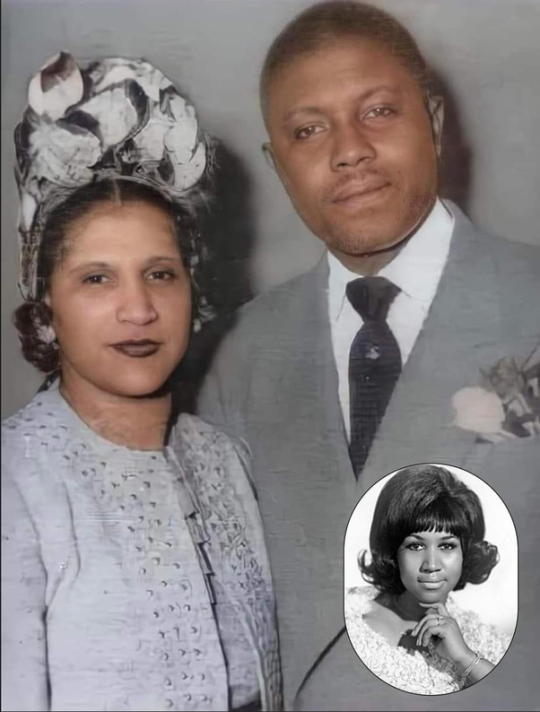
Aretha Franklin’s mother, Barbara Siggers Franklin, & Aretha's father, C.L. Franklin.
Barbara was a gifted pianist and, according to Mahalia Jackson, one of the finest gospel singers in the country.
Following marital trouble, she left Aretha's father in 1948 and moved to Buffalo, New York, where her mother resided. She made a life for herself working in a music store, giving private music lessons, and training to be a nurse's aide. She and Franklin never officially divorced.
Although it was widely reported that she had deserted her children, Aretha Franklin disputed that claim, and Nick Salvatore of Cornell University took pains to discredit it in his biography of C. L. Franklin. According to Salvatore, she visited Detroit to see her children, and they traveled to Buffalo during summer vacations for stays with her.
Barbara died of a heart attack on March 7, 1952, at 34 years of age. Aretha was only 9-years-old.
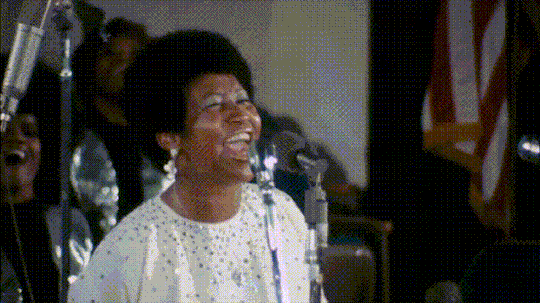
#african#kemetic dreams#africans#brownskin#afrakan#brown skin#afrakans#aretha franklin#nick franklin#nick salvatore#buffalo#buffalo new york#barbara singer#barbara sigers#barbara siggers#mahalia jackson#soul music#soul
104 notes
·
View notes
Text
Funky Drums in 30 tracks
The drum breaks from Funky Drummer by James Brown, Amen, Brother by the Winstons and Synthetic Substitution by Melvin Bliss are possibly three of the most sampled drum tracks ever. But there are more soul songs that have great funky drum openings, catchy intros and killer drum breaks.
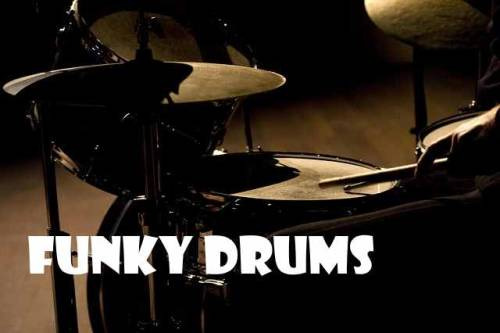
African Jive (Moto) - Dick Khoza (Chapita, 1976)
Baby Don’t Cry - The Third Guitar Featuring Eddie Holloway (Baby Don’t Cry / Don’t Take Your Love From Me, 1968)
Bailemos El Bump - Leopardo (Bailemos El Bump / Súper Mandíbulas, 1975)
City Sounds - Daly-Wilson Big Band Featuring Kerrie Biddell (The Exciting Daly-Wilson Big Band, 1972)
Corruption Is The Thing - Creations Unlimited (Corruption Is The Thing / Chrystal Illusion, 1972)
Crumbs Off The Table - The Young Disciples & Co. (Crumbs Off The Table / Girls, Girls, Girls, 1968)
Drum Diddley - Alan Moorhouse And His Bond Street Brigade (Alan Moorhouse And His Bond Street Brigade 1972)
Funky Fever - Jay Mitchell (Impartiality, 1975) - Bahamas
Gimme, Gimme - Tony Gregory And Family Child (One More Time, 1973)
Great Stone Bottle - Ronnie Kole Trio (New Orleans… Today, 1971)
Ham Hocks And Beans - Part 1 - Chuck Womack and The Sweet Souls (Ham Hocks And Beans - Part 1 / Ham Hocks And Beans - Part 2, 1970)
I Wouldn’t Change A Thing - Coke Escovedo (Comin’ At Ya!, 1976)
The Jed Clampett - The Sister And Brothers (The Jed Clampett - Part 1 / The Jed Clampett - Part 2, 1970)
Katty's Thing - Anthony Butler And The Invaders (The Chokin' Kind / Katty's Thing, 1969)
Let's Go To Randstad - Rogier Van Otterloo (Let's Go To Randstad / Randstad Reflection, 1974)
Love Is Good - C.L. Blast (Two Time One Is Two / Love Is Good, 1970)
Mo-Funk - Vern Blair Debate (Mo-Funk / Foxy Lady, 1977)
Ne Noya - Cos-Ber-Zam (Ne Nyoa / Cicavi Nye, 1973)
Nile Waves - The Scorpions & Saif Abu Bakr (Jazz, 1980)
Paradise - Bobby Franklin's Insanity (Paradise / Our Theme, 1969)
Phenomena Theme - In Search Of Orchestra (In Search Of..., 1977)
Plea To The People - Curry (Plea To The People / The Beauty Of You, 1971)
Sascha - The Hot Sound Of Mauritius (The Hot Sound Of Mauritius Is “Sega Music”, 1977)
Smash - Damn Sam The Miracle Man and The Soul Congregation (Damn Sam The Miracle Man And The Soul Congregation, 1970)
Sunday Drivin' - Dominic Frontiere (On Any Sunday, 1971)
Superstition - Blooblo (Reggae Party Time, 1973)
Toda La Juventud - Maggie Carlés Y Luis Nodal Y Los Magnéticos (Maggie Carlés Y Luis Nodal Y Los Magnéticos, 1976)
Uela Uela - Charly Antolini's Power Dozen (Atomic Drums, 1972)
Until You Were Gone - Leon’s Creation (This Is The Beginning, 1970)
Viva Tirado - The Exciters (Conozco A Los Dos, 1971)
More Funky Drums
Funky Drums in 20 tracks
Funky Drums: 25 drum intro’s and breaks
Steel Drum Soul
Funky Drums: 30 drum intro’s and breaksFunky Drums: 25 drum intro’s and breaks
Funky Drums: 100 Tracks with the best Drum Intros and Breaks
17 notes
·
View notes
Text
Premier Dumpster Rental Services in Franklin, MA
Need a dumpster rental in Franklin, MA? C.L. Noonan Container Service has you covered. As a full-service waste removal company, we offer roll-off containers and demolition trailer services to meet the needs of both residential and commercial clients. Our commitment to providing expert service means you can trust us to deliver and pick up your dumpster promptly and efficiently. Whether you're tackling a home renovation project or managing a construction site, our Franklin MA Dumpster Rental, is available in various sizes to accommodate your needs. Don't let trash pile up - order your dumpster rental online at CL Noonan for reliable waste removal solutions.
0 notes
Text

154
Aretha Franklin, ‘Amazing Grace’
ATLANTIC, 1972
“I don’t think I’m alone in saying that Amazing Grace is Aretha’s singular masterpiece,” Marvin Gaye observed. Recorded in an L.A. church with her father, the Rev. C.L. Franklin, on hand and Mick Jagger dancing in the back of the congregation, this return to Aretha Franklin’s gospel roots remains the bestselling album of her career, containing, arguably, the greatest singing she recorded. Part of this is because it didn’t sound like it took place in a church; Franklin approaches sacred songs as if they were soul standards, and delivers Carole King’s “You’ve Got a Friend” like it’s a hymn. “How I Got Over,” her fervent thank you to Jesus, must have made the Lord blush.
0 notes
Text
Aretha Franklin: Biodata dan Profil si "Ratu Soul"
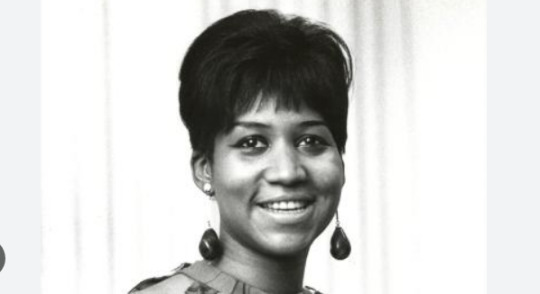
GERUBOK profil | Aretha Franklin, yang dijuluki sebagai "Ratu Soul," adalah seorang penyanyi, penulis lagu, dan pianis legendaris dari Amerika Serikat. Ia diakui sebagai salah satu vokalis terbesar dalam sejarah musik dan telah memberikan kontribusi besar dalam genre musik soul dan R&B.
- Baca Juga: Profil dan Biodata Elton John, Penyanyi Sukses Era Tahun 90an
- Celine Dion, Sosok Penyanyi Dibalik Soundtrack Film Titanic
Biodata dan Profil Aretha Franklin
Nama: Aretha Louise FranklinTanggal Lahir: 25 Maret 1942Tempat Lahir: Memphis, Tennessee, Amerika SerikatMeninggal: 16 Agustus 2018 (usia 76) di Detroit, Michigan, Amerika Serikat
Kehidupan Awal dan Bakat Musikal
Aretha Franklin lahir dari keluarga yang berkecimpung dalam dunia musik. Ayahnya, C.L. Franklin, adalah seorang pendeta dan penyanyi gospel terkenal, sementara ibunya, Barbara Franklin, adalah seorang penyanyi gospel juga. Aretha mulai menyanyi di gereja ayahnya sejak usia muda dan menunjukkan bakat luar biasa sebagai penyanyi.
- Baca Juga: Biodata dan Profil Adele, Kehidupan Pribadi Hingga Debut Perdana
- Profil Priyanka Chopra: Mengungkap Kekuatan Seorang Bintang Multitalenta
Karir Musikal
Aretha Franklin mendapatkan popularitas sebagai penyanyi gospel sejak remaja. Pada usia 18 tahun, ia menandatangani kontrak dengan perusahaan rekaman Columbia Records dan merilis beberapa album gospel. Namun, kesuksesan komersialnya baru terjadi ketika ia bergabung dengan Atlantic Records pada tahun 1967.
Album "I Never Loved a Man the Way I Love You" yang dirilis pada tahun 1967 menjadi terobosan besar bagi Aretha. Album ini memuat lagu hit "Respect," yang menjadi lagu ikonik dan menyuarakan semangat perjuangan hak sipil dan kesetaraan gender. Selanjutnya, Aretha merilis serangkaian album sukses yang memantapkan reputasinya sebagai "Ratu Soul."
- Baca Juga: Profil Ayu Ting Ting: Perjalanan Karier dari Kampung Hingga Viral di YouTube
- Profil Charly Van Houten: Perjalanan Karier dari Kafe ke Grup Band ST12 hingga Sukses dengan Setia Band
Karya dan Penghargaan
Aretha Franklin merilis banyak lagu hits selama karirnya, termasuk "Chain of Fools," "Think," "Natural Woman," dan "I Say a Little Prayer." Suaranya yang kuat, ekspresif, dan penuh emosi telah menginspirasi banyak penyanyi dan penggemar musik di seluruh dunia.
Ia telah memenangkan banyak penghargaan sepanjang kariernya, termasuk 18 Grammy Awards, menjadikannya sebagai wanita dengan jumlah Grammy terbanyak yang pernah dimenangkan.
Aktivisme dan Warisan
Selain kariernya di dunia musik, Aretha Franklin juga aktif dalam gerakan hak sipil dan berpartisipasi dalam konser amal dan kegiatan sosial. Ia memanfaatkan ketenarannya untuk mendukung berbagai isu sosial dan politik.
- Baca Juga: Wendy Walters: Profil, Perjuangan Karir, dan Kesedihan di Balik Keretakan Hubungan dengan Reza Arap
- Profil dan Biodata Nafa Urbach: Pesona Artis Era 80-an yang Tetap Memikat
Aretha Franklin meninggal dunia pada 16 Agustus 2018 setelah berjuang melawan penyakit kanker pankreas. Kematian Ratu Soul ini menghadirkan kesedihan mendalam bagi dunia musik, tetapi warisannya sebagai salah satu penyanyi terbesar dalam sejarah akan selalu dikenang dan dihormati oleh generasi-generasi selanjutnya. Suaranya yang abadi akan terus mengisi hati dan memperkuat semangat perjuangan melalui musik soulnya yang menginspirasi.
Temukan Berita Terkini, Berita Terbaru, Berita Viral dan Ramalan Zodiak Hari Ini dari gerubok lainnya di Google News.
Read the full article
0 notes
Text
Amazing Grace-Aretha Franklin
1-Mary, Don't You Weep ❤️
2-Medley: Precious Lord, Take My Hand/You've Got A Friend ❤️
3-Old Landmark ❤️
4-Give Yourself To Jesus ❤️
5-How I Got Over ❤️
6-What A Friend We Have In Jesus ❤️
7-Amazing Grace ❤️
8-Precious Memories
9-Climbing Higher Mountains
10-Remarks By Reverend C.L. Franklin
11-God Will Take Care of You
12-Wholy Holy
13-You'll Never Walk Alone
14-Never Grow Old
/10
1972
🌃
0 notes
Text
Aretha Franklin Was The Subject Of FBI Surveillance

Aretha Franklin was monitored by the FBI for her civil rights activities as revealed by a 270-page declassified file. Journalist Jenn Dize requested the document using the Freedom Of Information Act. Franklin's relationship with Dr. Martin Luther King and her overall interest in Black politics put her on the FBI's radar. The agency paid close attention to the concerts she performed for the Southern Christian Leadership Conference where King was the president. The organization had planned a big memorial concert for King after his assassination in 1968 and Franklin was scheduled to perform but they changed plans and opted to have a march to Morehouse.
The singer once talked about paying to get Angela Davis out of jail when the activist/scholar was jailed in an upstate New York prison because she was the owner of the guns Jonathan Jackson used in a California courthouse attack. She also performed at a fundraiser given for Davis in 1972 and this was another affiliation the FBI monitored. The organization linked Franklin to the Coordinating Counsel for the Liberation Of Dominica and they also looked at her communication with the Black Panthers.
The file also has documentation of multiple death threats against Franklin including one she received in 1979 after her father C.L. Franklin had passed. There is information about a lawsuit filed on behalf of Franklin regarding copyright infringement in connection to Yahoo! Groups message board and a participant who sold pirated copies of her music and performances. Franklin was one of several entertainers surveilled under J. Edgar Hoover's leadership of the FBI. Hoover was overzealous about the political actions of famous figures especially Black ones like Dr. King and Franklin because of his well-documented fear of "the rise of a messiah" who could unify Black people. Dize's discovery is a reminder of the influence artists have and the power of music. Franklin's version of Otis Redding's "Respect" was adopted early as a civil rights and feminist anthem.
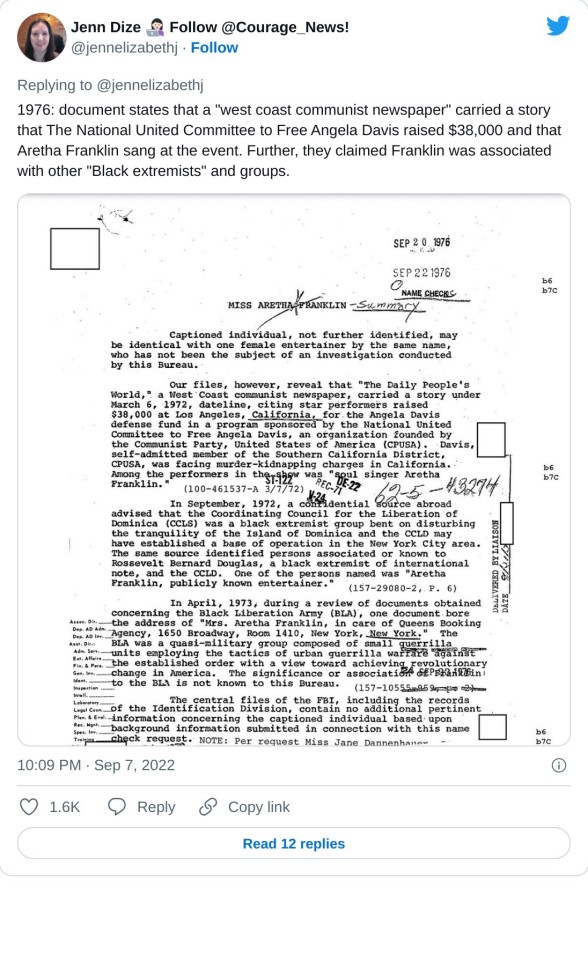
1 note
·
View note
Photo

🌟Aretha Franklin🌟 🎵Amazing Grace: White Double Vinyl LP🎵 Release Date: 27th May A gospel soul masterpiece, one of the great live records and vocal masterclass from a legit GOAT, no arguing. One of those ‘you need this in your home’ records. To say that Aretha Franklin was one of the greatest American artists of all time is an understatement. Her multi-octave voice moved millions around the world during an unrivalled career that spanned six decades and garnered the singer-songwriter every achievement and honour imaginable. Franklin has sold more than 75 million records worldwide making her one of the biggest selling music artists of all time. Amazing Grace, a live album originally released in 1972 is Franklin’s best-selling album of all time. To celebrate the 50th anniversary of the album, Rhino will be releasing a limited edition 2LP white vinyl. Featuring the title track ‘Amazing Grace’ as well as ‘Climbing Higher Mountains’. Side A Mary, Don't You Weep Medley: Precious Lord, Take My Hand / You've Got a Friend Old Landmark Give Yourself to Jesus Side B How I Got Over What a Friend We Have in Jesus Amazing Grace Side C Precious Memories Climbing Higher Mountains Remarks by Reverend C.L. Franklin God Will Take Care of You Side D Wholy Holy You'll Never Walk Alone Never Grow Old 💥💥💥LINK IN BIO https://www.instagram.com/p/CdGcoPtNMSr/?igshid=NGJjMDIxMWI=
0 notes
Text
Celebrating Vocalist Nancy Wilson for #JazzAppreciationMonth (LISTEN)
by Lori Lakin Hutcherson (@lakinhutcherson)
In continued celebration of #JazzAppreciationMonth, today we drop in on the underappreciated yet cherished and deeply talented song stylist Nancy Wilson, who was at one time in the 1960s the second most popular act on Capitol Records behind only the Beatles.
To read about Wilson, read on. To hear about her, press…

View On WordPress
#"Guess Who I Saw Today"#"How Glad I Am"#"Save Your Love For Me"#Beatles#Billy Eckstine#C.L. Franklin#Capitol Records#GBN Daily Drop Podcast#Grammy Award winner#James Cleveland#jazz vocalist#Julius "Cannonball" Adderley#LaVern Baker#Lionel Hampton#Little Esther#Little Jimmy Scott#Little Miss Cornshucks#Lori Lakin Hutcherson#Louis Jordan#Martin Luther King Jr. Center for Nonviolent Social Change#N.A.A.C.P. Hall of Fame Image Award#Nancy Wilson#National Endowment for the Arts#Ohio#Ruth Brown#Sarah Vaughan#song stylist
28 notes
·
View notes
Link
Vance is set to portray Aretha's father, C.L. Franklin. C.L. Franklin is described as "A star in his own right, C.L.’s legendary sermons were published and sold in record stores and broadcast on a weekly radio show, and he booked national ministry tours and public appearances. C.L. had a close but fraught relationship with his daughter and supported her throughout her career, most notably when he encouraged her transition from singing gospel to more popular genres."
Cynthia Erivo is set to play the Queen of Soul.
22 notes
·
View notes
Photo
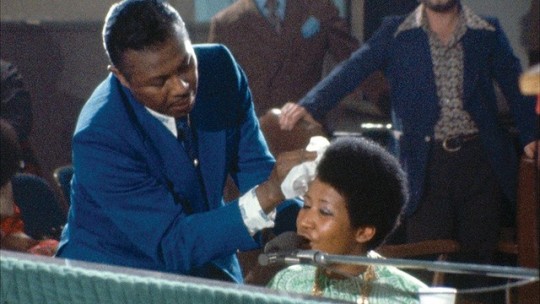
The Last Movie I Watched...
Amazing Grace (2018, Dir.: Sydney Pollack & Alan Elliott)
16 notes
·
View notes